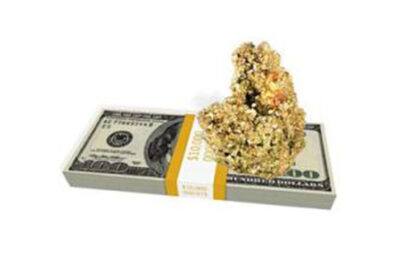“Fool’s Gold” Standards
In a recent Mises Daily, “A Golden Opportunity,” Patrick Barron and Godfrey Bloom make the case for Germany to withdraw from the monetary union combined with a strong argument that “a golden Deutsche Mark is possible and desirable.” This recommendation may be a step in the right direction, but it leaves Germany with a central bank and a discretionary monetary policy: “The Bundesbank would be responsible for monetary policy just as it was before Germany joined the EMU.” They conclude,
A prerequisite to market acceptance of any gold money would be confidence in the integrity of the sponsoring institution. Not only is the Bundesbank known for its integrity and reverence for stable money; Germany itself has a worldwide reputation for the rule of law, advanced financial architecture, and a stable political system. For these reasons, Germany would prove to the world that a gold-backed money is not only possible but desirable. (emphasis added)
Joe Salerno, in “Gold Standards: True and False,” provides some sound guidance on discussion of a return to gold. What is ultimately desired is a return to a market-chosen money, which has historically been a commodity — gold or silver money, not a gold- or silver-“backed” money. Salerno’s caution continues to be relevant. He argues,
A significant development in the current controversy over the role of gold in the U.S. monetary system, which has potentially important implications for both monetary theory and policy, has gone largely unnoticed by commentators on both sides of the debate. I am referring to the emergence of a new defense of gold that differs fundamentally from the traditional case for the gold standard. This development has been obscured by the diversity of plans for monetary reform coming out of the pro-gold camp. A close examination of these proposals, however, reveals that they are of two distinct types; they differ not only in the reasons they offer for considering a gold standard desirable, but also in their conception of what monetary arrangements constitute a “gold standard.”
First, there are the proposals that embody the traditional “hard money” arguments for the gold standard. These arguments focus on the desirability of a free-market commodity money vis-à-vis a government-monopolized paper fiat money. The basic thrust of the hard money proposals is to render government monetary policy superfluous by restoring a genuine gold standard under which the quantity and value of money is determined solely by market forces. The second group of pro-gold writers, whose proposals have received the most publicity, have eschewed the traditional hard-money case for gold and in its stead constructed a quite novel case purporting to demonstrate that gold can provide government monetary authorities with an effective instrument for managing the money-supply process within the established fiat-money framework. For this group, the raison d’être of a gold-based monetary regime is that it facilitates the achievement of government monetary policy objectives. Needless to say, the gold standard envisioned by these policy-oriented advocates differs quite radically from the ideal of the hard-money group. The gold “price rule,” which is the monetary reform favored by most policy-oriented gold advocates, bears only a superficial resemblance to the traditional conception of the gold standard. (emphasis added)
Given Professor Salerno’s careful differentiation of proposed gold standards as either true or false standards, one must be careful when evaluating any proposal for a return to gold. Questions of concern:
- Will the proposal, in the short run, be a better monetary system with better monetary policy than the current system of nationalized (or “continentalized,” in the case of the euro) fiat moneys?
- Is the proposal one that will move the system over time to a true gold standard — a gold-coin standard?
- Will the proposal become like the interwar gold-exchange standard, a false standard that will likely lead to economic results that will discredit gold (and/or silver) as money?
Salerno’s comments are equally applicable to other current discussions concerning gold that have recently appeared in the Wall Street Journal. Seth Lipsky, in “The Gold Standard Goes Mainstream,” points out that, as a result of Ron Paul’s influence, “In the ferment within today’s Republican Party, there’s a growing realization that America’s system of fiat money is part of the economic problem.” He concludes,
It is no small thing that Mr. Romney’s platform calls for a gold commission and an audit of the Fed. The last Republican to run on a platform calling for a dollar “on a fully convertible gold basis” was Dwight Eisenhower, who cast the promise aside once in office. That’s a strategic misstep for Mr. Romney, should he win in November. (emphasis added)
In a critique of a return to gold, John H. Cochrane of the University of Chicago concludes, “No monetary system can absolve a nation of its fiscal sins.”
Ron Paul, in “Why Monetary Freedom Matters,” reinforces Salerno’s caution on true reform, a market determined money, versus reforms, that while perhaps better than a “false trust in fiat money” will leave too many opportunities for monetary mischief. Paul states, “As far back as the Gold Commission (1982), I’ve made the case for gold.” But he wouldn’t close down the central bank: he would legalize competition in currencies, repeal legal-tender laws, and eliminate all taxes on silver or gold purchases, and allow private mints. In essence, his proposal is
similar to what F. A. Hayek (1976, 1978) had talked about. Why don’t we denationalize money, legalize competition, allow free markets to work, and allow free-market banking to work?
Armed with Salerno’s strong case for a true gold standard, you be the judge. In my judgment, Ron Paul is on the right track; Cochrane is misdirected by false gold standards; and Barron and Bloom’s proposal, while attractive in the short run, is (if not accompanied by Paul’s suggested reforms in the United States and elsewhere) most likely a step in the wrong direction.
Advocates of sound money should be heartened by the interest currently being generated for monetary reform. Discussion should be guided with a few things in mind:
- Gerald P. O’Driscoll Jr.’s concerns about abolishing central banks,1
- Salerno’s gold standard: true or false, and
- Paul’s caveat that
Others are thinking about it [monetary reform], but some of them would like to internationalize something different than the dollar reserve standard. They would like to have another fiat currency and a pretend alliance with gold — and they want to move control over a new global currency into the IMF and the World Bank. I think that would be a disaster. (emphasis added)
Let’s hope Lipsky’s optimism concerning a gold commission becomes a reality where a “well-conceived and well-staffed gold commission” (preferably one dominated by Austrian-influenced economists) actually sorts out the issues in favor of competition in currency and an evolution toward a gold-coin standard à la the outline provided by Paul.
Continue reading at mises.org…










